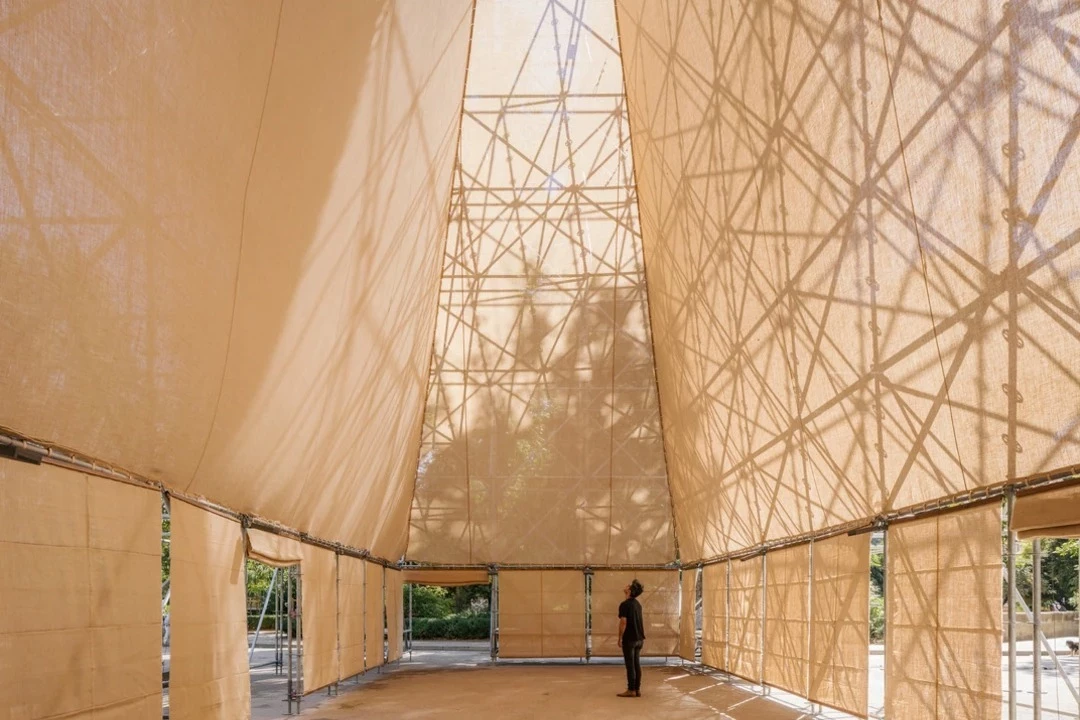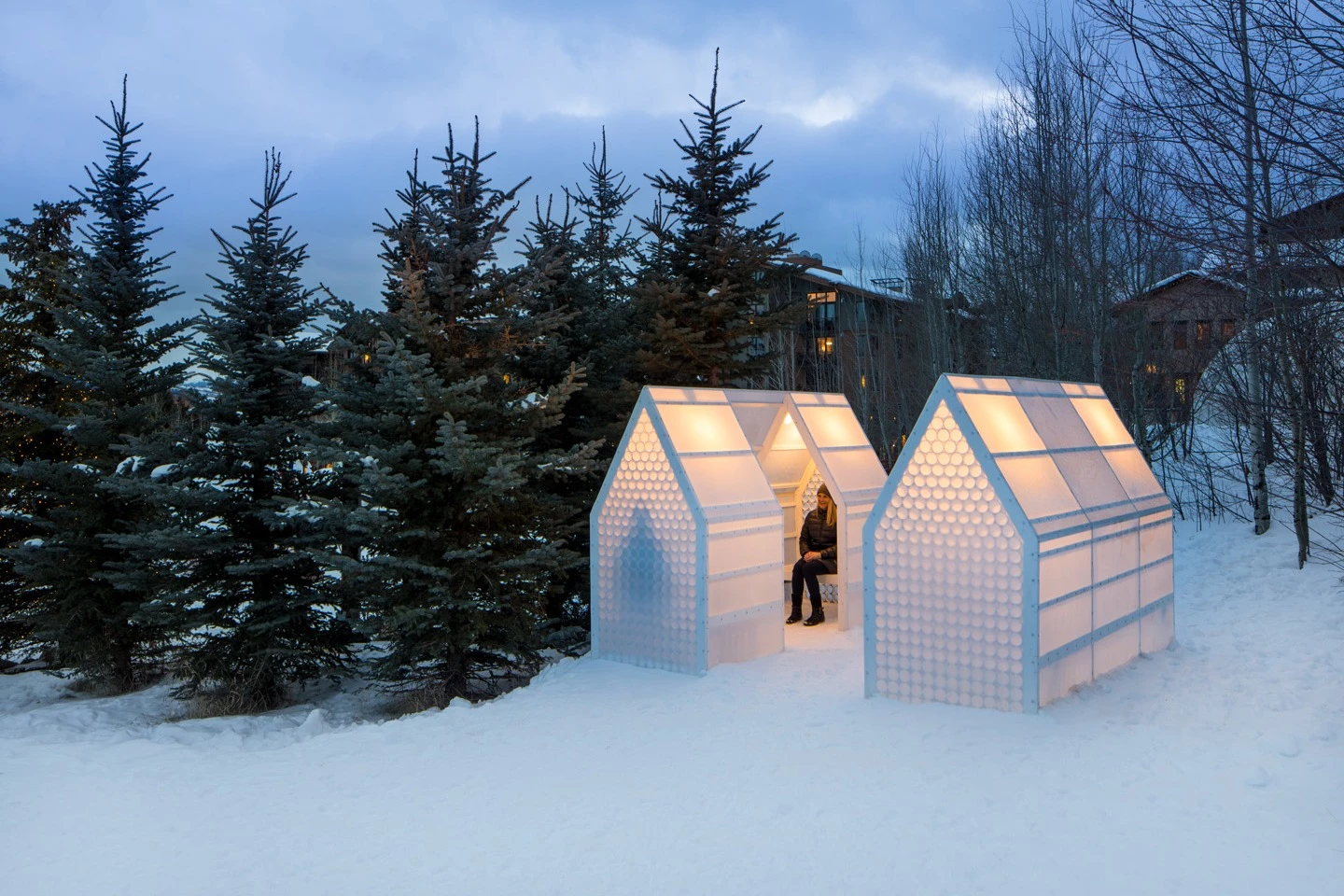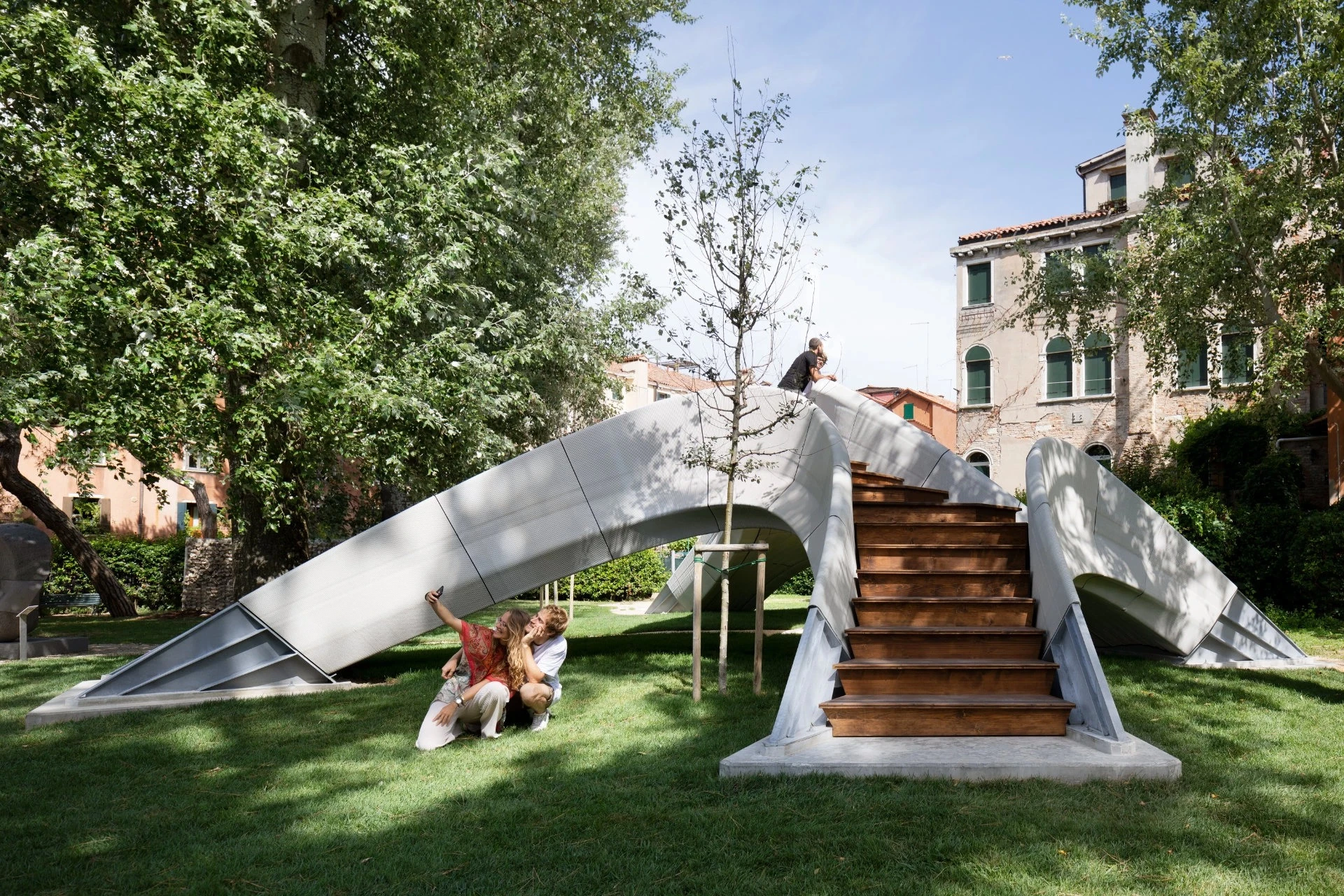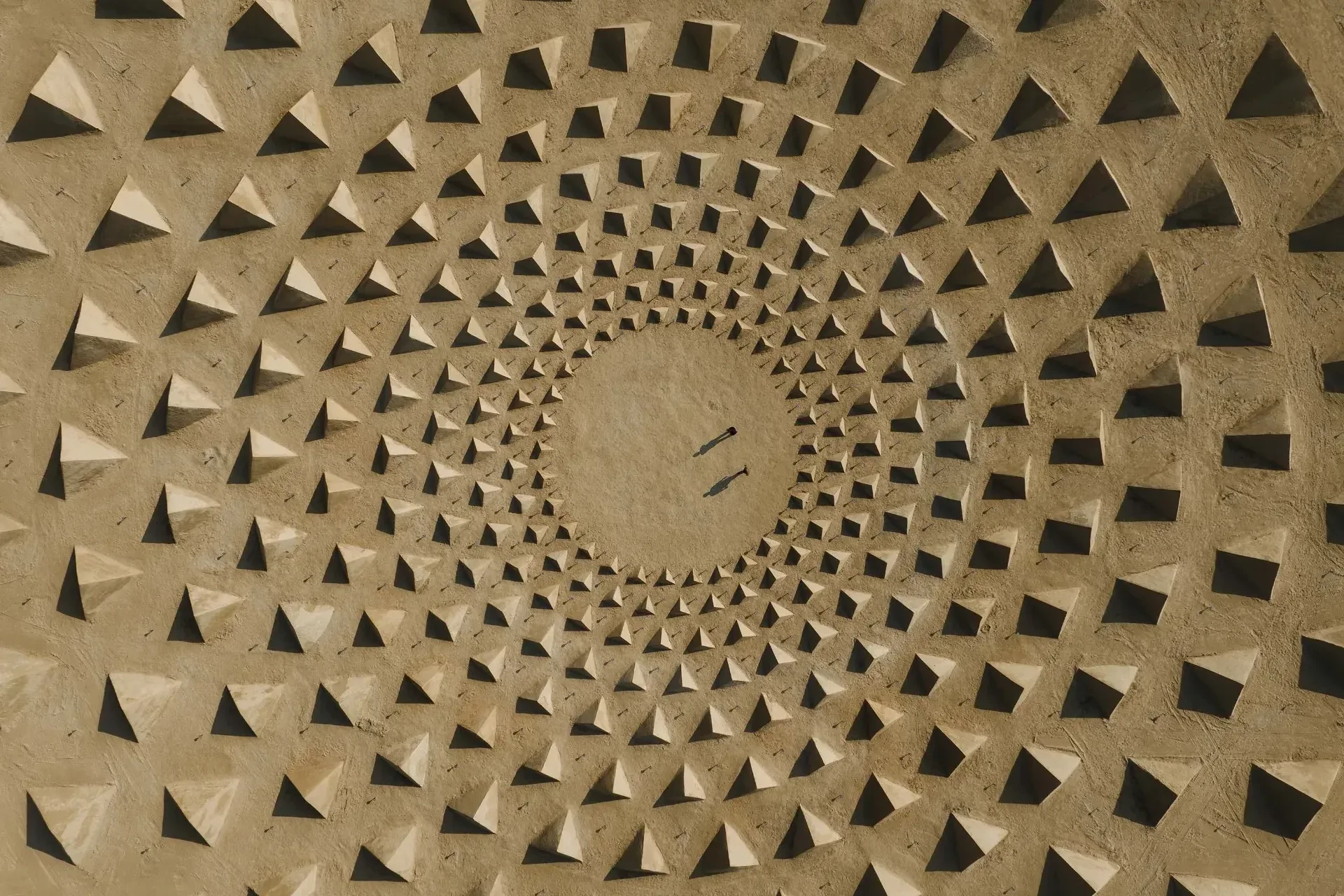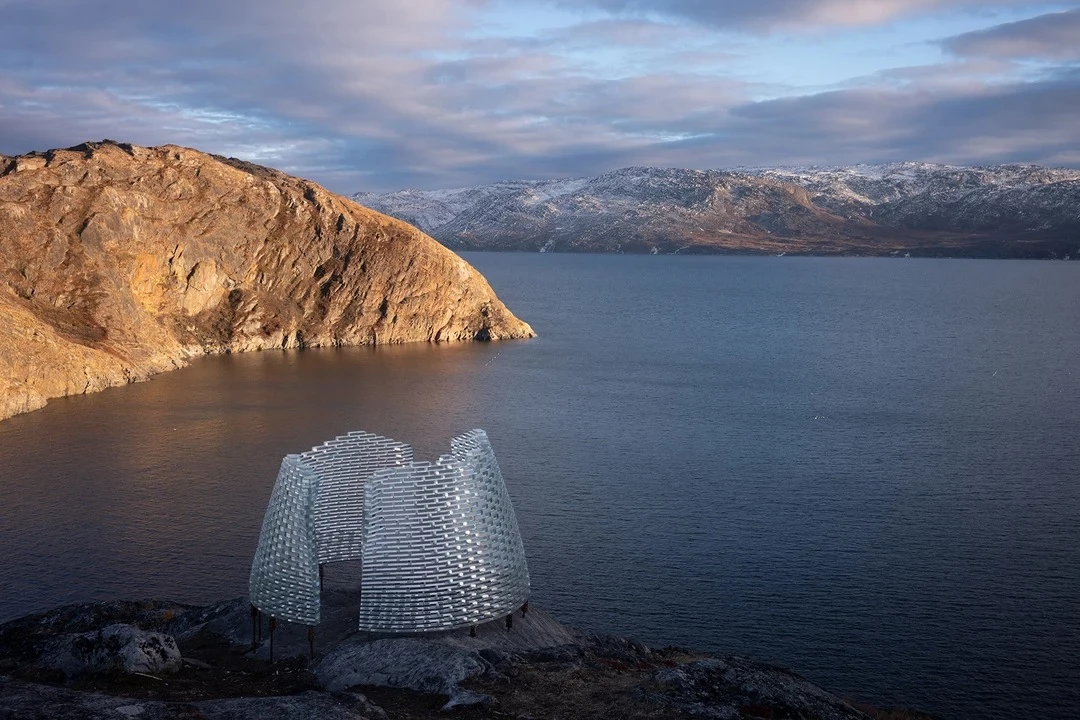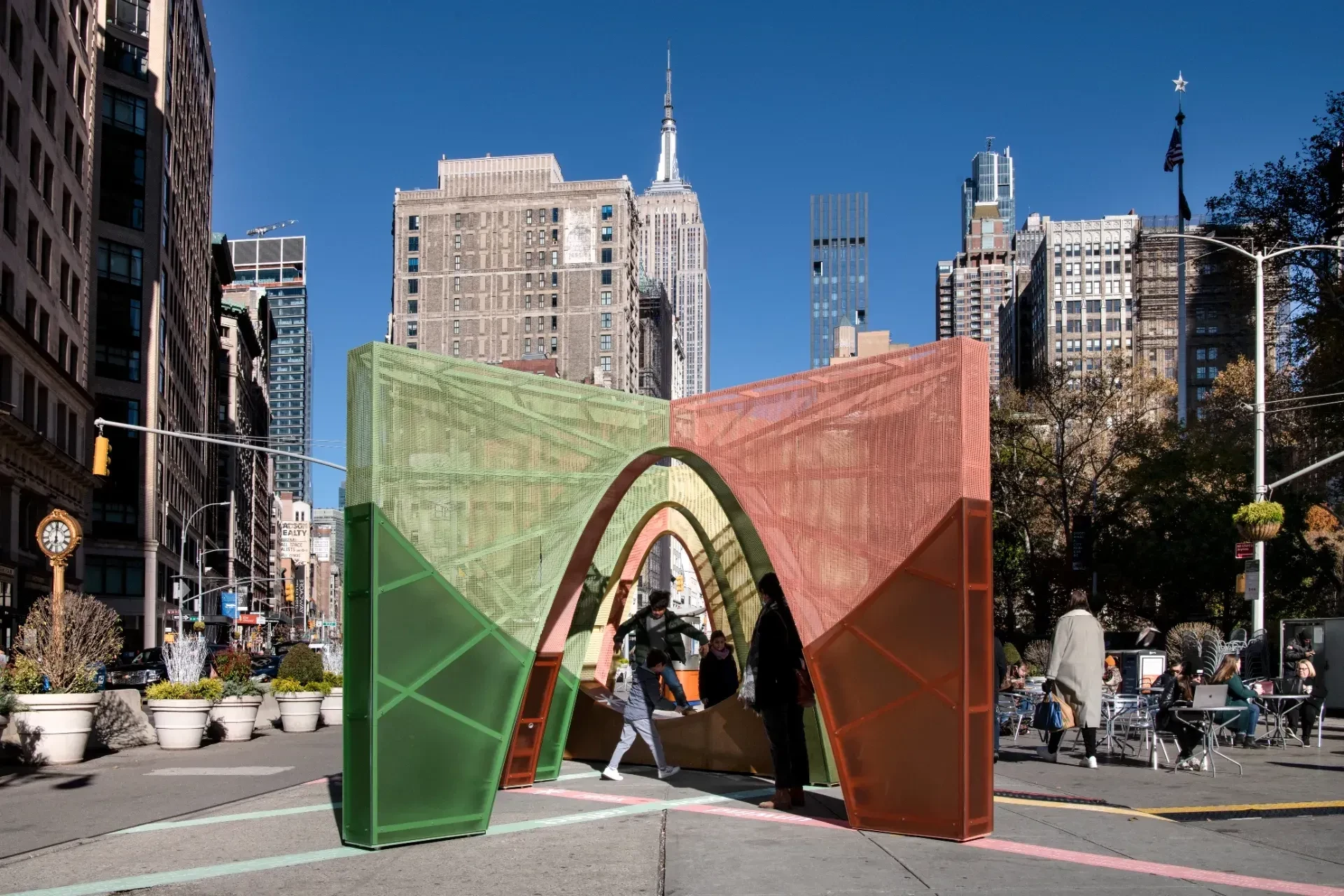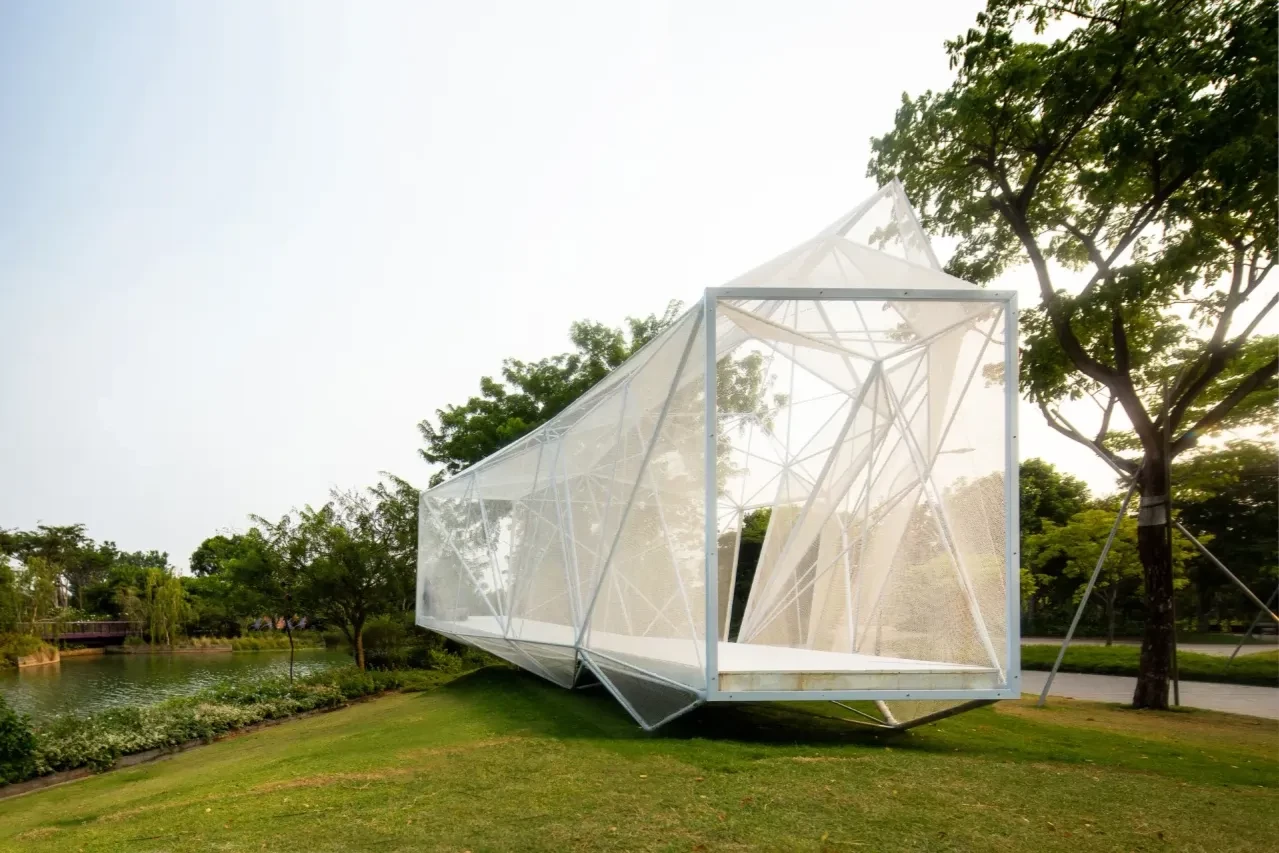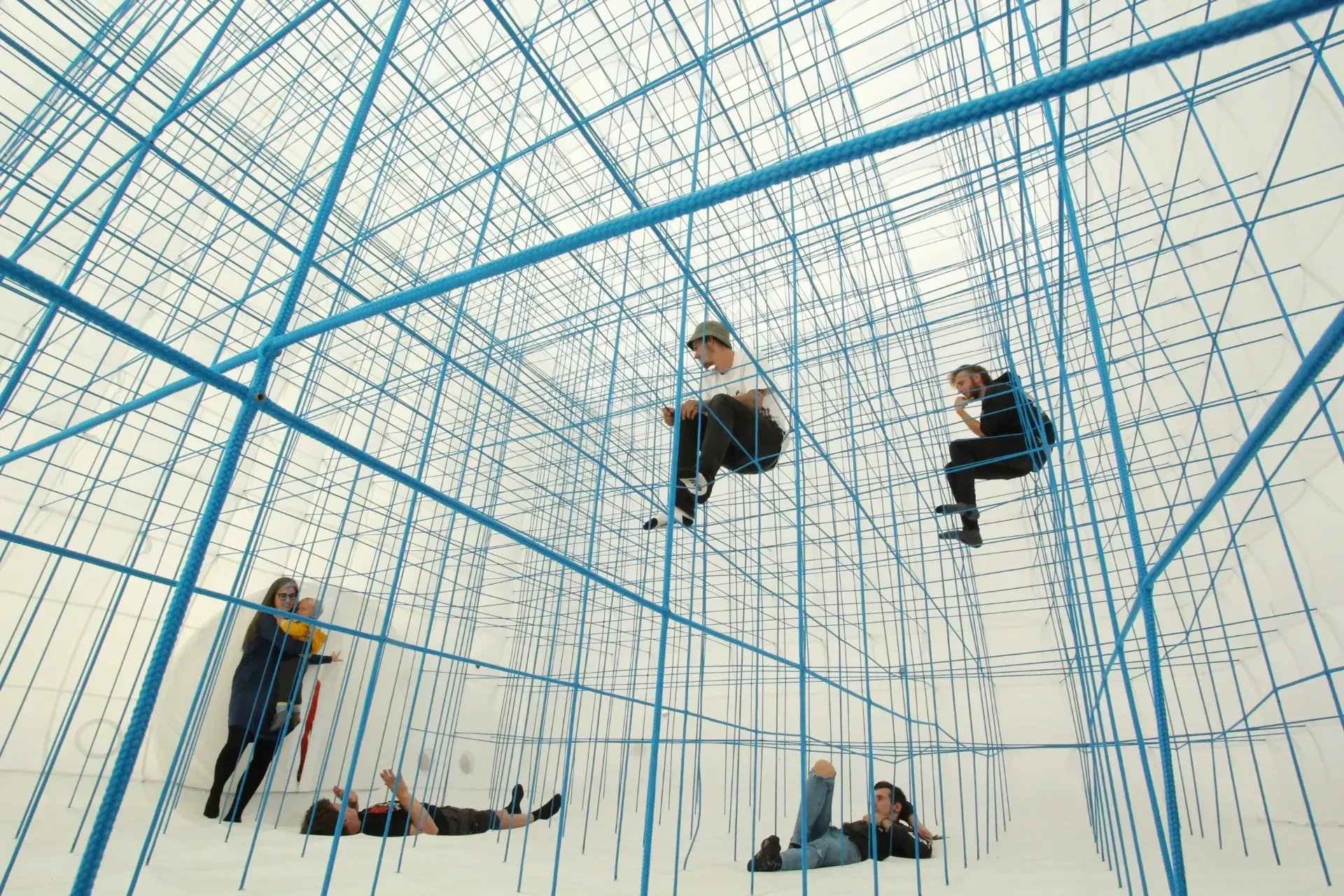西班牙格拉納達 AIRE 臨時裝置亭
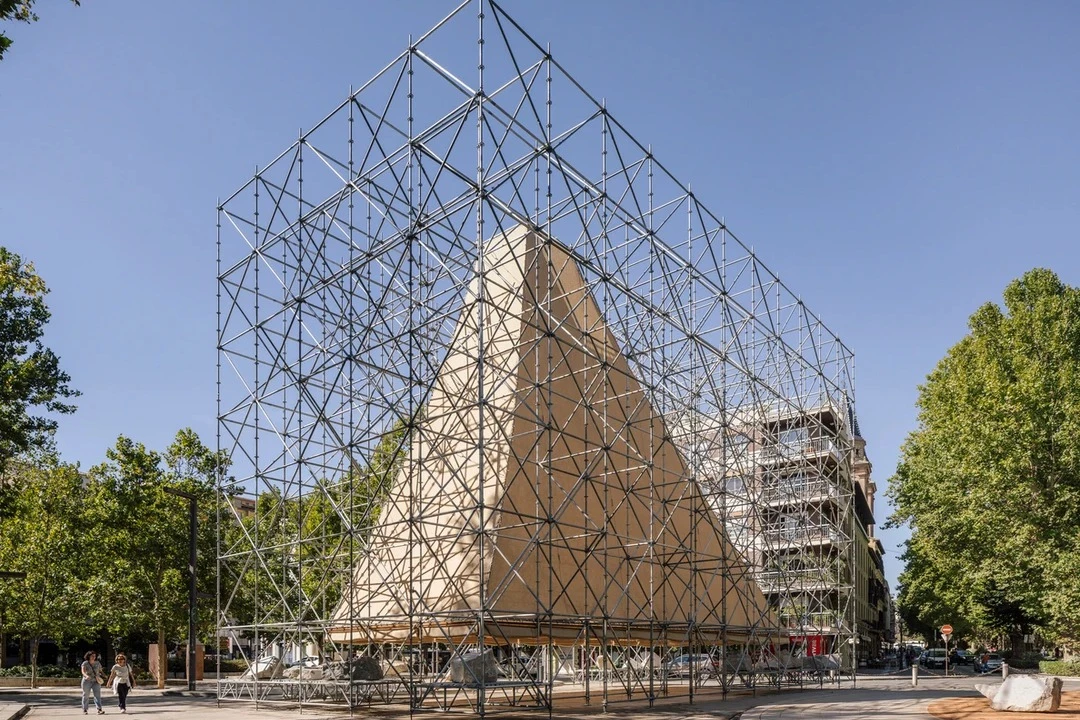
AIRE pavilion is built on the imaginary of the ephemeral, the fragile and immaterial, alluding to one of the most essential and intangible elements of architecture. As occurs in a tent in the middle of the desert to protect from the sun, or in the airy space of the circus supported by a series of masts, an image that reflects the condition of the unfinished or in the process of being erected with all its corporeity, a half-finished architecture, is constructed.
AIRE 臨時裝置亭建立在對短暫、脆弱和非物質的想像之上,暗指建築中最重要和無形的元素之一。如同沙漠中的帳篷中用來遮擋陽光,或是一系列由桅杆支撐的馬戲團帳篷,它反映著未完成或正在發生中,一個建造完工的「半成品的建築」。

AIRE is resolved solely by means of three material strategies, which seek to establish an exercise of synthesis, constructive veracity and sustainability. Firstly, a scaffolding system, a reflection of industrial systematization, which, although it has its origins in the very beginnings of the architectural tradition, today represents modularity and globalization in construction, as well as ephemerality and apparent fragility, which is condemned to disappear once the work is finished. This system resolves the load-bearing structure of the pavilion; a resistant fabric that is linked to a lighter one, an envelope of hessian fabric, a symbol of locality, handicraft, the shade (or the control of light), tradition and vernacular knowledge, the recognisable, the commonplace of the area. A way of rescuing Granada's own identity and its climate. Finally, a group of riprap stones from Sierra Elvira (the local quarry) provides the necessary counterweight to the structure and implements new urban furniture in the surroundings of the pavilion, connecting the intervention with Plaza del Humilladero.
裝置僅利用三種材料(鷹架、麻布與石塊)搭建。首先,鷹架系統反映著工業化,雖然它起源於傳統建築的開端,但在今日則代表建築的模塊化和全球化,以及當完工就注定要消失的脆弱性,同時,它又良好解決展館的承重結構;再者,作為一種輕量的耐磨織物,麻布代表著手工藝、光影、傳統以及當地識別度,是一個司空見慣的象徵,屬於某種拯救格拉納達自身特徵和氣候的策略;最後,來自當地採石場的一組亂石壓在底層鷹架上,為結構提供了必要的配重,並在展館周圍佈置了新的城市家具,將裝置與周邊廣場連接起來。




The use of these three materials demonstrates AIRE's commitment to the circular economy, as well as to the value of the local economy and the traditions and trades of Granada. Thus, the scaffolding, which is rented, will have a new use once the pavilion is dismantled; in the same way, the riprap stone will return to its original quarry; and finally, the locally made hessian fabric, will also have a second life, as it is an element widely used as a shade in the city, and can be easily relocated to another public space in Granada.
這三種材料的使用表明了 AIRE 臨時裝置亭對循環經濟的承諾:租來的鷹架在展館拆除後有了新的用途;亂石也會回到原來的採石場;當地製造的粗麻布也將獲得第二次生命,因為它是城市中廣泛用來遮陽的元素,並且可以輕鬆地重新安置到格拉納達的另一處公共空間。

Principal Architects:Francisco Parada.Laura R. Salvador
Structural Engineering:Grupo Cero
Building Area:236 ㎡
Principal Materials:Steel scaffolding.Hessian fabric.Riprap stone
Principal Structure:Steel scaffolding
Location:Granada, Spain
Photos:Imagen Subliminal (Miguel de Guzmán.Rocío Romero) · Javier Callejas
Text:P+S Estudio de Arquitectura
Interview:Grace Hung
主要建築師:弗朗西斯科.帕拉達 勞拉.薩爾瓦多
結構工程:賽羅集團
建築面積:236 平方公尺
主要材料:鷹架.麻布.石塊
主要結構:鷹架
座落位置:西班牙格拉納達
影像:潛意識意象(米格爾.古茲曼 羅西奧.羅梅羅) 哈維爾.卡列哈斯
文字:P+S 建築設計工作室
採訪:洪雅琪


